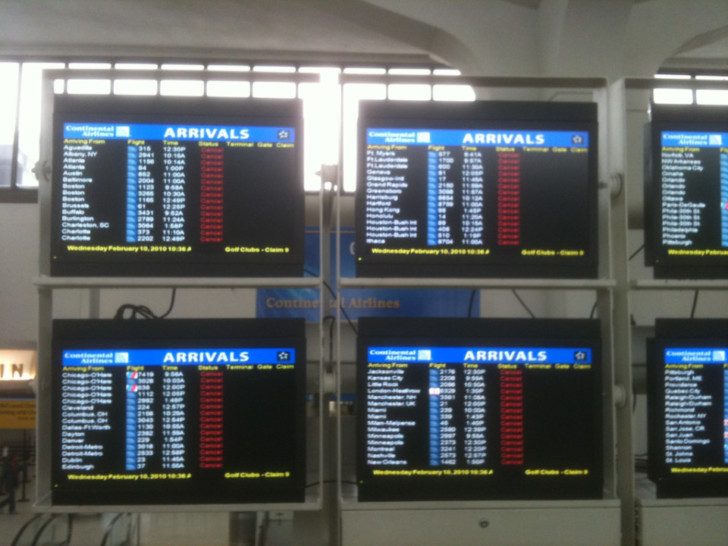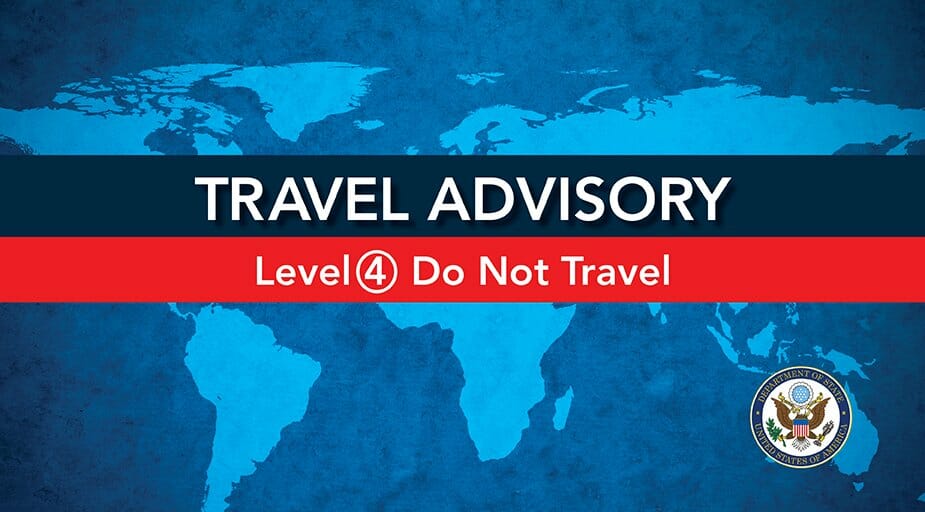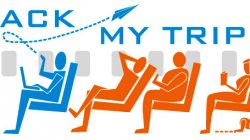The U. S. State Department has withdrawn its Do Not Travel Advisory that was issued on March 19, 2020. This advisory urged American citizens not to travel overseas due to the covid-19 pandemic.
State Department Action
When the pandemic first hit, it was Asia and Europe that were impacted first. Airlines virtually came to a halt leaving thousands of American citizens stranded overseas. The State Department went to work to establish ex-patriot flights returning these stranded travelers back to the United States.
The next step by the State Department was to issue the Level 4 advisory – its highest level.
“(W)ith health and safety conditions improving in some countries and potentially deteriorating in others, the Department is returning to our previous system of country-specific levels of travel advice (with Levels from 1-4 depending on country-specific conditions), in order to give travelers detailed and actionable information to make informed travel decisions,” a Thursday note from the State Department said.
“This will also provide U.S. citizens more detailed information about the current status in each country,” the note said. “We continue to recommend U.S. citizens exercise caution when traveling abroad due to the unpredictable nature of the pandemic.”
CDC Advisories
The U. S. Center for Disease Control (CDC) still advises that Americans avoid non-essential travel to more than 200 destinations that experience a high COVID-19 risk.
“We are closely monitoring health and safety conditions across the globe, working in partnership with the CDC and other agencies. As always, we will regularly update our destination-specific advice to U.S. travelers as conditions evolve,” the State Department note said.
“The Department of State has worked closely with the CDC since the start of the pandemic to align our public messages and travel advice and to keep Americans safe,” it said. “The Department’s COVID-19 Travel Advisories are informed by CDC’s expert judgment of the health situation as well as other factors related to travel, infrastructure, healthcare resources, and potential closures and restrictions in the country which are important for U.S. citizens to consider.”
The Level 4: Do Not Travel advisory put into effect in March advised “U.S. citizens to avoid all international travel due to the global impact of COVID-19” and urged Americans “in countries where commercial departure options remain available” to “arrange for an immediate return to the United States unless they are prepared to remain abroad for an indefinite period.”
It’s Not Over
Lifting the advisory does not give Americans the green light to freely travel. Other countries have restrictions placed on those departing from the U.S.:
- Travel to and from Canada and Mexico is restricted to essential travel only essential travel at least through the end of August,
- The European Union has blocked entry by U.S. citizens,
- The UK requires a mandatory 14-day quarantine period for U.S. visitors.
- Many states mostly in the northeast and Alaska still have 14-day quarantine requirements for visitors coming from high-risk states and
- Hawaii is still enforcing its 14-day quarantine requirement with relaxing the requirements now targeted for September 1, 2020. This date has been extended and is subject to change again.
Additionally, there are many countries that have COVID-19 testing requirements. There are differences in testing protocols for visitors entering these countries. I have a trip to the Crane Beach Resort in Barbados coming up in October. Here is what the testing requirements are in Barbados:
The Barbados Ministry of Tourism has instituted new protocols for entry into the country, including requiring a negative COVID-19 test 72 hours before arrival to the island. If you arrive in Barbados without a test, or your results are more than 72 hours old, you will be required to test on arrival. You have the option of testing for free at the airport (wait times are approximately two hours) or being transferred directly to The Crane, which has been designated as a satellite testing hotel. Please note that if you are being tested at The Crane, group transfer is mandatory and is $20 per person. Satellite testing at The Crane is $150 per person. Prior to arrival, please indicate your testing preferences through this online form. Testing at The Crane must be booked 48 hours before arrival. Visit the Travel Updates page for more information.
If you plan to visit a foreign country, be sure to check that country’s entry requirements well in advance of your departure.
A Warning About “Vented” Face Masks
There is a disturbing development regarding face masks. There are manufacturers making vented face masks. These masks are being billed as more comfortable because they allow more air in. The problem is they also let more air out which negates the usefulness of these masks. Delta Air Lines has already has banned face masks with valves.
The carrier will no longer allow flyers to wear masks with exhaust valves. Per an update to the Delta mask policy, “Any mask with an exhaust valve is not approved as an acceptable face mask for customers traveling on any Delta operated flight. Here is Delta’s position on vented face masks:
The latest guidance, informed by the many conversations we are having with health officials and other experts, is that face coverings and masks without vents work best for everyone’s safety. Delta has plenty of complimentary masks without vents for our customers at airports who may need one.
I would expect other airlines to adopt the same vented mask policy.
Final Thoughts
Just because the State Department advisory has been lifted doesn’t mean that we can still travel like we used to. Many counties and even other states have outright bans from entry, to quarantine and testing requirements. If you are planning a foreign visit, check with that country’s entrance policy and make sure that you can comply before you leave home. Travel as we used to know it most likely won’t return until there is a proven vaccine available.






